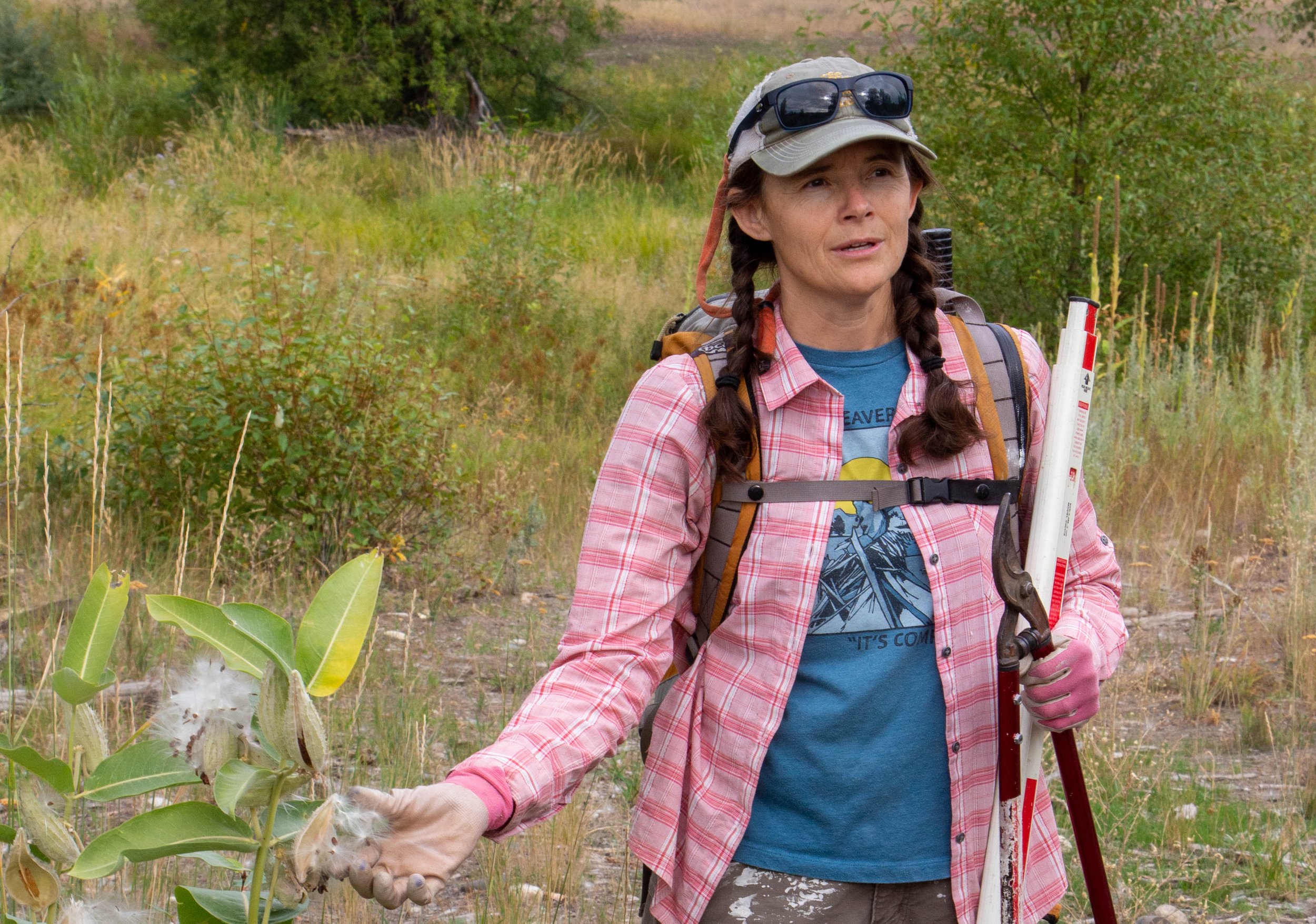Alexa Whipple
Executive Director, Methow Beaver Project
Methow Valley, WA
9/5/2021
Along the Methow River’s Silver Side Channel, Alexa Whipple, Project Director for the Methow Beaver Project, emphasizes that diversity is key to the stream health. The river channel here weaves through riparian vegetation, side pools, debris, rapids, and two beaver ponds. At the end of the second pond, a large section of plastic tube allows for fish to pass through an existing beaver dam. It is one of many on-the-ground restoration projects that Alexa manages.
Today, beavers have largely been removed from the Methow River watershed by human trapping and their habitat replaced by houses built next to streams. This means that reintroducing the mammal to these parts hinges on landowner cooperation. To Alexa, the short-term goal is to protect current beaver habitat and introduce them in key, manageable locations. The long-term goal is to move people out of the floodplain and allow streams to flood and meander again. Restoration projects like the one on Silver Side Channel are proactive steps toward a beaver-filled watershed, but Alexa recognizes they will not accomplish this goal on their own, saying, “solutions don’t have to be the final option.”
Efforts to restore beaver to the Methow River are slow-moving and face a variety of challenges. Perhaps most severe: the species is not protected in the U.S., so trappers may kill the beaver that Alexa and her organization have invested so much in. Still, Alexa often carries a forward-looking beam on her face as she works.
By Fielding Schaefer
Photo credit: Haley Post


